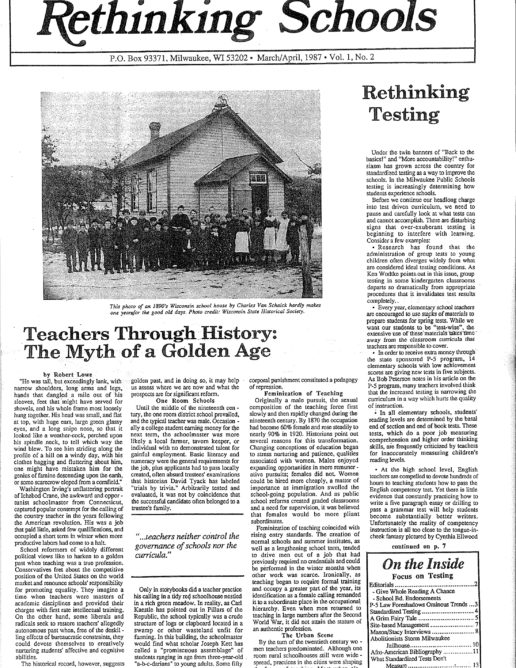Final Applause for Stacy Vote for Mason
Incumbent Doris Stacy brings to the race for the city-wide school board seat some strong credentials and positive contributions. But her present outlook and fourteen years history on the board offer evidence of fundamental problems in her approach to educational problems.
We believe, with some reservations, that Gloria Mason is the stronger candidate, and if elected would act as a consistent advocate of the needs and desires of parents, students and teachers.
To her enduring credit, Doris Stacy played a leadership role in the desegregation of Milwaukee Public Schools. Her firm support of integration offered a refreshing contrast to the many school board members who upheld segregation because of their own racism or political cowardice.
But unfortunately, Stacy’s support of desegregation has been marred by her blindness to the problems caused by the way it has been implemented. The McMurrin plan buses black children at nine times the rate of white children. It permits white parents to keep their children in neighborhood schools or send them to specialty schools of their choice, options often not available to black children and parents. These inequities have soured many members of the black community to desegregation.
Stacy contends that blacks must be bused more because of a large student age population and too few classroom seats in inner city schools. This argument ignores the administration’s policy of purposely closing black schools to force black students to bus for desegregation. It also ignores the fact that the Board rejected community recommendations, most notably those of the Committee of 100, to pair and cluster schools on the northside and southside to equalize the burden of busing.
Stacy’s defense of funding for specialty schools is also unconvincing. Her contention that specialty schools only received extra resources to get started does not explain the special funding they continue to receive ten years later.
Perhaps most disturbing, Staby does not seem willing to directly grapple with the continuing failure of the school system to provide an equal and effective education to children of color.
In contrast to Stacy, we believe that Gloria Mason has been able to put forward a realistic assessment of the main problems our schools face and suggest some good ideas on how we might solve these problems. She believes that the inequitable system of segregation has been ended in a discriminatory way. While aware of the danger of re-segregation, she recommends steps designed to promote school integration in a fair manner. To this end she advocates more specialty programs at different sites and making busing voluntary for both whites and blacks. She believes that integration could be maintained voluntarily if students found desired programs and quality education at the end of the bus ride.
We disagree with both Gloria Mason’s and Doris Stacy’s positive assessment of the basal reading program. We believe that basal reading trains students in narrow skills rather than reading comprehension (see our last issue). We also think Gloria Mason stresses the mainstreaming aspect of bilingual education too much. Bilingual education’s goal should be to preserve children’s culture and language while teaching them English.
Gloria Mason’s main strength is her connection to the community. Her candidacy is supported by a large cross section of people concerned with quality education. Her agenda is shaped by parents’ concerns. If she is elected she will be an access point for the community to influence the school administration.
Doris Stacy has become a defender of the administration, particularly the superintendent, instead of a representative of the people.
Doris Stacy played a progressive role in the late 1970’s. Any recounting of the struggle against the segregationist forces that dominated Milwaukee for so long would be remiss not to mention her positive contribution.
Gloria Mason, however, has emerged as the candidate to articulate the community’s concerns, clarify problems, and offer solutions.
It’s time to pass the torch.

